 I must warn you: this is a long post.
I must warn you: this is a long post.
But you deserve the full story and - if you’re willing to walk through this - you’ll discover exactly what my wife and I did to launch Trekity.com, our new travel blog.
More importantly, you’ll discover the exact traffic strategies we used to get 8,370 pageviews the first week.
Ready to get started?
Before We Start: A Few Disclaimers
Not all this traffic was “free.” As you’ll see, a percentage of traffic came from StumbleUpon ads, a press release and a HARO (Help a Reporter Out) ad, all of which went live May 1st.
Trekity did not happen overnight. We launched with over 830 pages of content (actually, it was closer to three thousand, but we’re only counting destination pages). I don’t want you thinking we just slapped a few posts up and BAM! Instant traffic.
Since Trekity covers the entire world - you’ll understand if you visit the site - we needed close to a thousand pages just to scratch the surface.
Our marketing plan began 90 days before. And it was aggressive (you’ll see how aggressive in a second).
So if you’re looking to launch a new travel blog - or take your existing blog to the next level - this post reveals how much went work went into this.
But having said that, we made a lot of mistakes along the way. Some stuff worked. Others didn’t. This is your chance to learn from our mistakes.
Let’s dive right in…
Launch day
As you can see above, Trekity’s first week received 8,370 pageviews.
More importantly, you’ll notice almost half of that traffic occurred on May 1st. This was no accident. Darcie and I spent the previous 90 days scheduling all our marketing materials to go live on May 1st (though several went live early, hence April 30th being included in the seven days).
What were these marketing materials, you ask?
Here’s what we did:
- Press Release through PRWeb ($369 normally, $319 with a first time buyer promo code)
- HARO ad ($300)
- StumbleUpon ads ($300)
- 51 guest posts (yes, we wrote them all)
I had also written a free eBook for Vagabondish readers, which was released on May 1st. It was more of a branding play (meaning I wanted to build Trekity’s brand alongside a popular travel blog) rather than a way to get traffic, but I mention it here for the sake of thoroughness.
As I’ve mentioned elsewhere, there are three reasons for marketing online:
- Increasing traffic
- Getting links
- Building your brand
That’s it.
Seriously, everything you do should satisfy at least one of these goals (ideally all three).
Having said that, let’s look at each method and its results…
Method #1. Press Release through PRWeb
If you’re unfamiliar with the term, a press release lets you write a news article about your company. PRWeb is a service which then distributes your news piece to high ranking sites like Yahoo! and SFGate.
Here’s our press release which went live May 1st.
As you can see, over 1,300 websites republished that press release:
Plus, most of these sites linked back to Trekity, which is great for SEO (especially big-name sites like Yahoo!).
So from an SEO perspective, PRWeb was a huge win. One piece of content = 1,000+ links.
Nice.
And it worked for branding, too. Press releases give you a chance to talk about your blog (something you can’t usually do in guest posts). Also, they target journalists who may write about your blog in the future.
But what about traffic?
Take a look for yourself:
Hmmm…
There are few things to consider here. First, this only shows traffic from PRWeb (and not the 1,000+ sites which reproduced it).
Secondly, the quality of those readers is quite high. As you can see they spent almost ten minutes on the site and viewed over 6 pages. These are people who are likely to sign up and/or return to Trekity in the future.
Plus, journalists read press releases… which can lead to interviews, other articles, etc.
So overall:
- PRWeb for branding: good.
- PRWeb for traffic: not so good.
- PRWeb for SEO: great.
Let’s move on…
Method #2. StumbleUpon ads
StumbleUpon is a wildly popular social network site. It’s like channel surfing: you tell StumbleUpon what you like (e.g. “travel”) and it serves up a relevant website which you can either like (called a “Stumble”) or just move on to the next random site.
You (the blogger) can pay to have your blog put in front of users for $.05 - $.25 each, depending on your ad level. You can learn more about their ad program here.
We chose to advertise with StumbleUpon for a few reasons:
- It was about 1/10 the cost of Google Adwords
- It had the potential to go viral (other users would see it get popular and Stumble it themselves)
- It allowed us to target the travel market
So we paid $300 for 3,000 visitors to hit our site on May 1st.
Unfortunately, Google Analytics does not register all StumbleUpon traffic (most, in fact) because it uses Javascript, which is blocked by many browsers.
(Note: I am purposely glossing over this subject in order to push forward. You can read the technical stuff here.)
So while we paid (and received) 3,000 visits, Analytics only reported…
As you can see, Analytics didn’t register close to 2,000 visits… which means Trekity actually received over 10,000 visits its first week (but for the sake of continuity I won’t include this in our total).
But how do I know we actually got the traffic we paid for?
Here’s a screenshot showing the stumbles on Trekity:
Ah, so they did show up, after all.
Keep in mind: the other 94 may have been other users on StumbleUpon, or completely random visitors. I have no way of knowing for sure.
So how did StumbleUpon do?
Well, in terms of traffic it was a clear winner: 3,000 people is a great start. But looking at the Analytics report above we see they didn’t really engage much with the site. They only spent 1:13 and didn’t view many pages.
That’s OK. StumbleUpon users - like someone flipping through TV channels - are notoriously finicky. They click…. and then… POOF!
Gone.
But hopefully some will stick around.
As for SEO, it’s pretty worthless. There aren’t any links from this traffic, but since that wasn’t our goal with this source, it’s not really a big deal.
Same with branding. Our goal was to get 3,000 people to see Trekity on day one - and we did. Seeing it in StumbleUpon didn’t build our brand really (not like with guest posting, which we’ll get to in a moment).
So in summary:
- StumbleUpon for branding: poor.
- StumbleUpon for traffic: great.
- StumbleUpon for SEO: worthless.
Now let’s take a look at the next method which is…
Method #3. Help A Reporter Out (HARO) advertisement
HARO connects journalists with experts looking to get exposure. Let’s say you’ve got a travel blog about Southeast Asia. Sign up for HARO (it’s free) and receive three emails a day with lists of journalists looking to write about travel topics.
If you notice a journo looking for experts on Southeast Asia, contact them and (maybe) get some press.
In each email HARO has a small intro hyping up some product or service.
It looks like this:
(Note: everything under *****INDEX***** are journalists looking for experts.)
So buying one of these ad spots seems like a good idea. After all, people who sign up for HARO are either journalists or people who have travel sites…
… so whoever responds to this email is a good fit for Trekity.
At least, that’s what we thought.
May 1st came… and went. And guess what? I never received the HARO email (and I’m signed up for it!).
After going back and forth with HARO, the answer I got was that I needed to check with my email provider. Right. The guys at Google are more than happy to look into this issue for me.
Sigh.
And sure enough, the evening version - the one without my ad - arrived.
Now, I’m not gonna sling mud.
Instead, I’m going to show you our traffic from this ad:
Ouch.
This ad - which we paid $300 for - sent 143 visitors to Trekity. If you do the math, that’s $2.09 per visitor. By comparison, we paid slightly less than ten cents per visitor with StumbleUpon.
Of course, it did send more traffic than PRWeb, but without the SEO benefits (which is why we used the press release, anyways; traffic was gravy).
So HARO lacked PRWeb’s SEO benefits and StumbleUpon’s traffic. In short, it was the worst of both worlds.
- HARO for branding: poor.
- HARO for traffic: expensive and ineffective.
- HARO for SEO: worthless.
Method #4. Guest posting
I’m a big fan of guest posting. So much so, that - before we launched Trekity - we decided to line up not one, not two, but fifty guest posts to go live on May 1st.
And you know what? It worked.
We focused on the two industries we know best: travel and marketing. Darcie personally reviewed and contacted over 200 blogs and pitched them guest post ideas. Of those, over 60 blogs accepted and 51 published our posts on May 1st.
Here are the top ten sites who referred us traffic:
Note: sites that are checked published our guest posts.
Problogger was our biggest referrer, followed by Business Insider and Vagabondish. As you can see, Business Insider visitors interacted with the site more than Problogger, and Vagabondish readers stayed even longer.
This makes sense.
After all, Vagabondish is a travel blog, too, and Mike Richard (Vagabondish’s editor) personally endorsed our site.
Lifehack and Art of Backpacking also sent traffic, but after that it dropped off considerably. In fact, nearly all guest posts sent less than ten visits each… which… when you consider it took an average of 3 hours to pitch, write and deliver the posts, is not a very high ROI on our time.
Especially when StumbleUpon ads sent ten people to Trekity for one dollar.
Of course, guest posting isn’t just about immediate traffic. It’s also about getting high quality links from trusted sources, which moves Trekity up in the search results and ultimately gets more traffic in the long-term.
It helps with branding, too. But there’s something even more valuable.
Relationships.
We now know over 60 prominent publishers. We can promote each others content. Create products together. Whatever it may be, those relationships are worth their weight in gold.
So in summary:
- Guest posting for branding: excellent.
- Guest posting for traffic: decent.
- Guest posting for SEO: excellent.
Conclusions, Musings and What We Need To Do Next…
- We won’t do another press release. Frankly, the SEO benefit diminishes after one round and that’s the main reason we did it.
- We will run StumbleUpon ads again… especially when promoting a viral worthy post. For ten bucks you can show it to a hundred eyeballs, which isn’t a bad way to jumpstart exposure.
- We won’t run HARO ads again, for obvious reasons. I’m not knocking HARO, mind you, it just didn’t work for us. It may have been the ad I wrote, who knows?
- We will continue guest posting… but in a different way. We’ll definitely guest post on the top five traffic referrers again, but will focus on working with larger blogs in a variety of industries. Top blogs = more direct traffic, stronger brand and higher quality links.
- We will build more relationships with journalists.
But Most Importantly…
We will focus on two things: creating content and building relationships. Our goal is to ultimately create a piece of high quality content and have our partners promote it for us.
This will make marketing much, much easier and allow us to focus more on content and monetization.
Have you tried these methods? Which others would you recommend?
Let me know in the comments below!
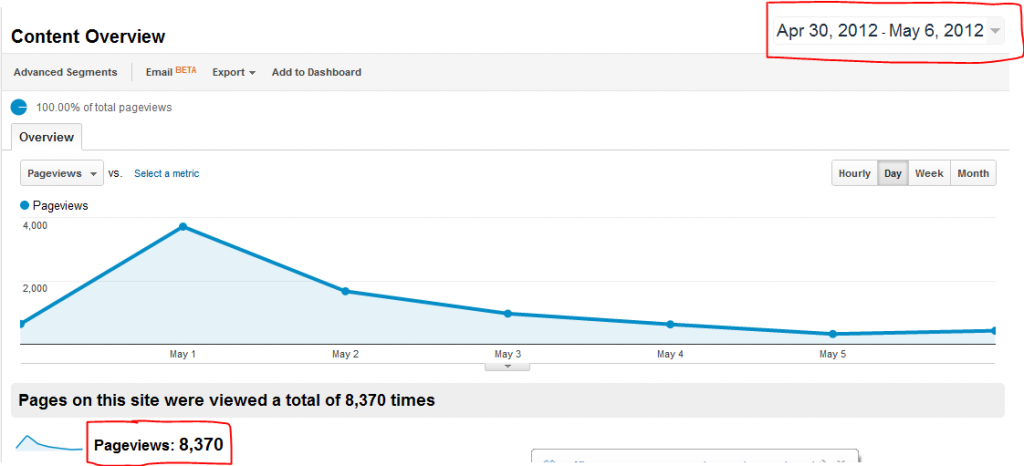
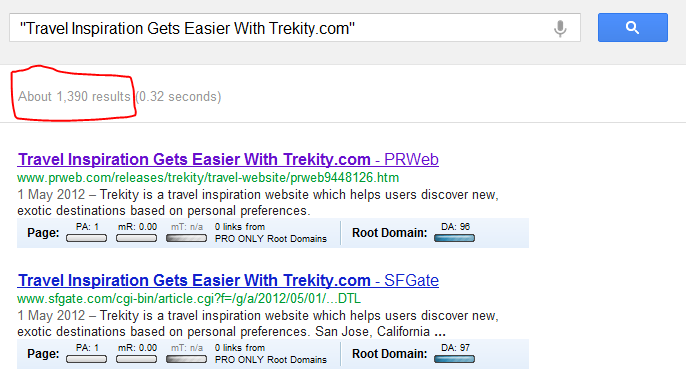



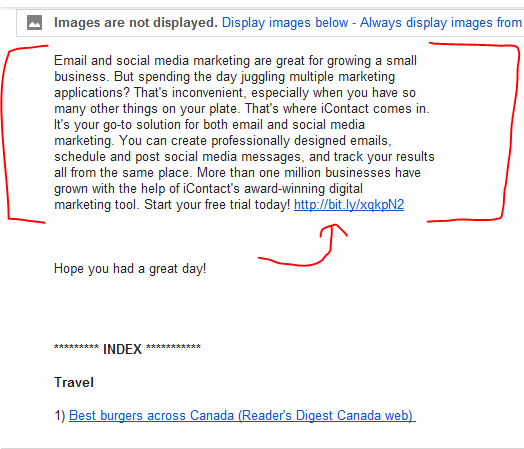
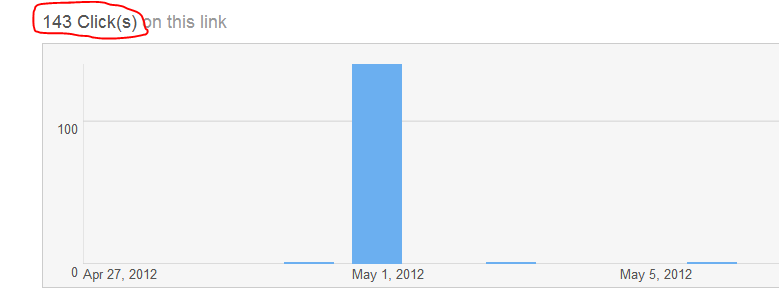
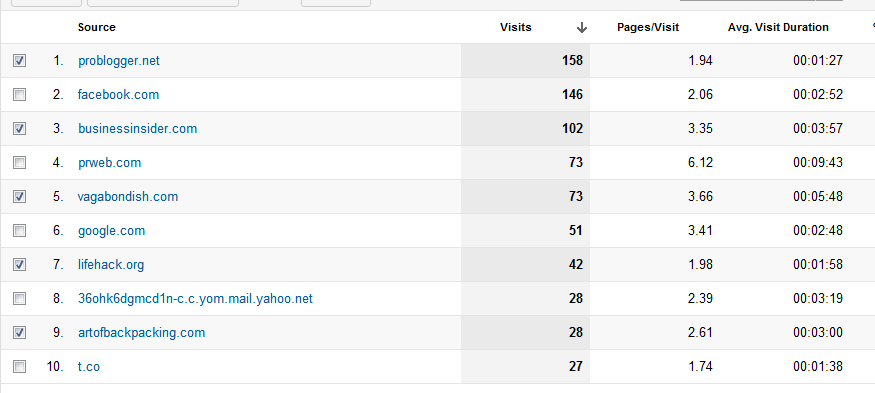
I just recently started my blog and have been debating whether or not to use paid advertising or just try to grow organically. I definitely see the plus side in both but at the end of the day I think it’s important to build relationships and solid content like you said.
Seems like a lot of work was put into the May 1st launch date. But my question would be, out of the 830+ pages of content, how long did it take to write all of that? Creating that much content would have taken a considerable amount of time. Would this same amount of traffic also be generated if you had just posted and developed a following over, lets say a year of creating the content?
Yep, paid, organic and referral traffic all work, especially when put together. Paid is great for announcing new posts/sites or selling products (assuming you actually make money on the deal).
Excellent question about content: we purposely waited to launch until we had enough content to make the homepage useful.
This blog, on the other hand, only launched with about a dozen posts. Which was enough to be valuable.
So the amount of content you launch with really depends on your business goals. I’d say for those just starting out with a new travel blog should aim to launch with between 10 - 15 posts.
It’s enough for people to browse through, without getting lost 😉
To answer your question: the 830+ pages took about nine months of concentrated effort. We definitely could have built an audience while publishing the content (which, in hindsight, I’d probably suggest) but there were numerous development issues we had to iron out beforehand.
In short: we wanted to put our best foot forward.
So helpful to get real time, real world experience. Thanks for taking the time to detail your journey. As I’m in process on a new launch you’ve helped me sort through options, save time and energy. Whew! Wishing you great success for all the effort. Travel on!
Hi Elaine,
If there is one piece of advice I’d offer, it’s to try lots of small, different approaches at once…
… then, after the dust settles, you can objectively measure what worked and what didn’t.
Then rinse and repeat 😉
This is a really excellent breakdown and an exciting case study! In my last post I was just talking about how much work it takes to launch and maintain a successful travel blog and I think this will make an good example for those starting out.
Hi Andrea,
Glad you enjoyed it. What advice do you have for maintaining a successful travel blog? We’d love to hear it!
Thanks for sharing. This is a very interesting article. However, I launched my blog at the end of March 2012 and I have the same Google page rank your site does. You have done about a zillion times more to promote your blog and I would think you would have earned a Google page rank higher than mine. Wassup with that? I know a lot of people look at Google page rank. What other metrics matter and which do you think matter most?
PS: I did roll over some content from an older poorly maintained blogger blog that I had.
Hi fellow boomer! The PR thing is weird - its totally unrelated to rankings in Google or visitors, but basically if you have one link from a PR3 site - you’ll get PR3 on a new site. I did it for my site when I first put it up last year - in that last update it dropped to PR2 - but again that seems very common.
That is an EXCELLENT question.
Google only updates the Page Rank toolbar every three months or so. The last one was on May 3rd which may or may not include any of the links we built.
Since you bring up PR, I prefer to use the SEOMoz Domain Authority as a metric. It ranks from 0 - 100 how authoritative your blog is to the search engines.
I wrote a post about it here:
http://travelbloggeracademy.com/guest-posting-travel-blogs/
Most travel blogs fall between 40 and 60. Trekity is currently a 19.
But the thing is, the Domain Authority is always two months behind. So - while Trekity has a DA of 19 right now - that number will jump sometime in early July (even if we do nothing else).
I’ve gotten sites in the 40s very quickly, so it’ll be interesting how all this hard work plays out 😉
I didn’t know it was that out of date - that’s useful! I’m assuming their measure is strongly based on backlinks - is that your view?
Hi Lissie,
There are two measures of Google’s PR:
>> What it uses (which is updated all the time), and
>> What it reveals publicly (every three months or so)
The Page Rank was designed by Larry Page (hence the name) who is the co-founder of Google. It is only one of over 200 signals Google uses to rank webpages in their search results.
Is my nerd showing yet? 😉
In my opinion PR is not worth even looking at anymore, because it’s a drop in the bucket. The SEOMoz Domain Authority is much, much better because it tries to match those 200 factors (instead of just one) Google uses to rank its search results.
Yep, my nerd is definitely showing now.
The key to PR is that links are based on QUALITY, not quantity.
It’s like high school. If the homecoming king is your best friend, you’re much more popular than if you had ten great friends in the drama club.
I sincerely hope no high school students (especially drama club members) read this.
To understand how PR works (and why authoritative links matter) take a look at this graph:
http://upload.wikimedia.org/wikipedia/commons/thumb/f/fb/PageRanks-Example.svg/400px-PageRanks-Example.svg.png
Hope this helps. I’m seriously trying to not geek out on this question 😉
By the way, I installed the comment subscription - how’s it treatin’ ya?
You’re a geek who worked at Google - I’m listening to any geek stuff you have to offer LOL. BTW I was the kid in the corner with no friends and a book at school- this social media shizz is really hard work for me!
Yup see the comment subscription worked - I’m back and giving you more free content 🙂
Give away, Lissie, give away 😉
What do I say? This was a phenomenal effort. Congrats, man…
Thanks Yeremi, I appreciate it.
What marketing steps do you take with your blog?
I found you from your gobackpacking guest post. I’m surprised you didn’t get more people clicking thru because it was an excellent post I also found your bio box compelling - as Dave runs a travel bloggers site I’m surprised not more of those people noticed.
Ah yes, the post on Costa Rica Vs. Nicaragua.
I’ve got an interview with David going live next week (along with 9 other top travel professionals)… will definitely be exciting 😉
BTW - Lissie knows more about PR than practically anyone I know. (Hey Lissie!). (Adam - nice post on Costa Rica VS Nicaragua over at Gobackpacking). Having lived in Nica for over 10 years I had to leave a comment.
Lissie’s been holding out on us, huh? Hopefully we’ll glean some PR advice from her soon.
I’m glad you enjoyed the GoBackpacking article - we lived in Nica for three months (now in Ecuador) and really enjoyed it. Next time we’re there we should meet over Tonas 😉
Awesome breakdown mate. Didn’t even know about things like StumbleUpon Ads even though a lot of traffic is generated from StumbleUpon which we use a lot for our own content and others content. Do you think it is worthwhile using PRWeb for a personal blog if you can create that many links? Am I reading it right that you now have over 1,000+ links from sites just from using it?
Hi Cole,
Nice to see you here again.
StumbleUpon ads (in my opinion) work well for promoting something *new* as a way to spark interest. The problem with StumbleUpon is that people using it are on the lookout for something new… and there’s always another site just a click away.
As for PRWeb, it’s a thorny issue.
Generating 1,000 links sounds great in theory, but you’re really only getting “credit” for the one from PRWeb because the content is all the same.
So yes, we did get 1,000 links from it, but it’s not the quantity that matters, it’s the quality. Having PRWeb in your link graph (nerd alert) is a signal of trust.
I could really go off on this subject (which would not be fun to watch, I assure you), but the short answer is:
If you have the money, a press release will give you SEO benefits and (hopefully) generate a few interviews with journos.
However, it should *NOT* be used all on its own, but rather in conjunction with other marketing efforts (social, guest posts, etc.).
SEOMoz (one of two blogs I subscribe to) wrote an excellent post on this subject:
http://www.seomoz.org/blog/are-you-wasting-budget-with-online-press-release-distribution-14595
It talks about integration of your efforts, which yield better results.
Hope this helps!
(By the way, what type of content would you like to see more of here?)
Thanks for the additional info Adam. Something to think about when we are looking for extra promotions but definitely hard to pick which articles are going to go viral! Will just keep posting cute animal pictures up because they always work haha.
Loving the site and not sure about what else we want to see but just keep it coming. Just read through your first newsletter and have redefined our USP so there you go! Learnt something already.
If you guys are keen to interview or feature us on your site for an example of what we did wrong when we started blogging 8 months ago to where we are now then just get in touch!
Thanks Adam, great write up and advice!
When you were searching for potential targets, did you only reach out to those sites who specifically said they accept guest posts?
Hi Matt,
Nope - we target everyone who we feel is a good fit. In fact, many sites which say they DON’T take guest posts have accepted ours (and others).
Hi Adam,
Thanks for an interesting post. What do you think about some of the social media services offered by people on fiverr? (such as offering diggs, stumbles, likes etc). Is it a cost effective way of adding promotion, or semi-worthless? I am kind of uncertain as to the actual value of stumble, other than if it increased Alexa ranking, which might be useful well selling space to advertisers?
Hi Dave,
Nice to see you here. People buy stumbles, tweets, likes, etc. all the time on Fiverr, basically for the social proof aspect (“Look! My page got 3,000 Tweets!)…
… then cross their fingers and hope other people with like/tweet that content too.
I get that. In fact, I even considered it when we launched Trekity. I was terrified people would show up to our homepage with a dead-looking social bar.
But you what? We went against it for the following reasons:
1. “Paid” social accounts on Fiverr (or elsewhere) are not influencers. They aren’t real people who are followed by real people (usually) and therefore - from a traffic perspective - aren’t very valuable.
2. I’d rather pay for traffic (not shares). StumbleUpon offers paid ads, so for ten cents you get a real person to your site. This is MUCH more valuable than someone who’s paid to click your share button, which is why we paid for SU ads instead.
3. I’m tired of “shortcuts”. Because they don’t work. There are a million people out there offering a “quick” solution to things like trust, authority and respect. But (unless you’re Tony Soprano) they just don’t work.
Hope this helps Dave, lemme know what else you’d like to see here!
No doubt, an impressive achievement! I think it certainly is a myth that the field is too crowded for new travel sites to emerge and do well. This is a great case study and reference guide to quickly make an impact with your site.
Great case study, thanks for sharing. I’m thinking I can pull some of these tips and use it on client sites. I’ve never really looked into SU ads just because I know that users don’t really stay on the site they stumble upon. Curious, why didn’t you try FB ads? Too expensive?
Hi Jasmine,
We didn’t do Facebook ads because we thought it less effective than SU. Of course, the key to good marketing is to test ideas and see what sticks… so we’ll probably test it in the future.
By the way, what content would you like to see more of here?
Cheers,
Adam
You are a very bright individual!
Pretty nice post. I just stumbled upon your blog and wished to say that I have really enjoyed surfing around your blog posts. After all I’ll be subscribing to your rss feed and I hope you write again very soon!
Made my way here from a link on dailyblogtips.com to your guest post on thinktraffic.net about the Trekity launch. Love the Trekity site by the way, I really think it’ll do well as people use it as a travel discovery tool.
Hi Adam,
I am glad to read this case study that you conducted for your travel site. I am currently using Stumbleupon Paid Discovery and it rocks. When you conducted the test experiment with Stumpleupon Paid Ads, how many articles did you actually create for your campaigns? I am curious because some of my posts are being liked or others have stumbled from various connections. According to your article, I am assuming that you only paid $300 for one day worth of 3000 visitors. How many free stumbles did you receive from one day traffic? Feel free to reply to my post or email me.
Thanks,
HHD
This is a very interesting account of how you managed to get lots of traffic. I have not tried paid stumbleupon before but it seems that it has been working very nicely for you and some of the commentators. I am in favour of guest posting. Although its not easy guest posting as many don’t except it that easily.
i am so glad i found your website, i have been thinking about doing some training/course for SEO and the ‘tech’ side of blogging - this is all exactly what i was looking for, great website, so helpful !